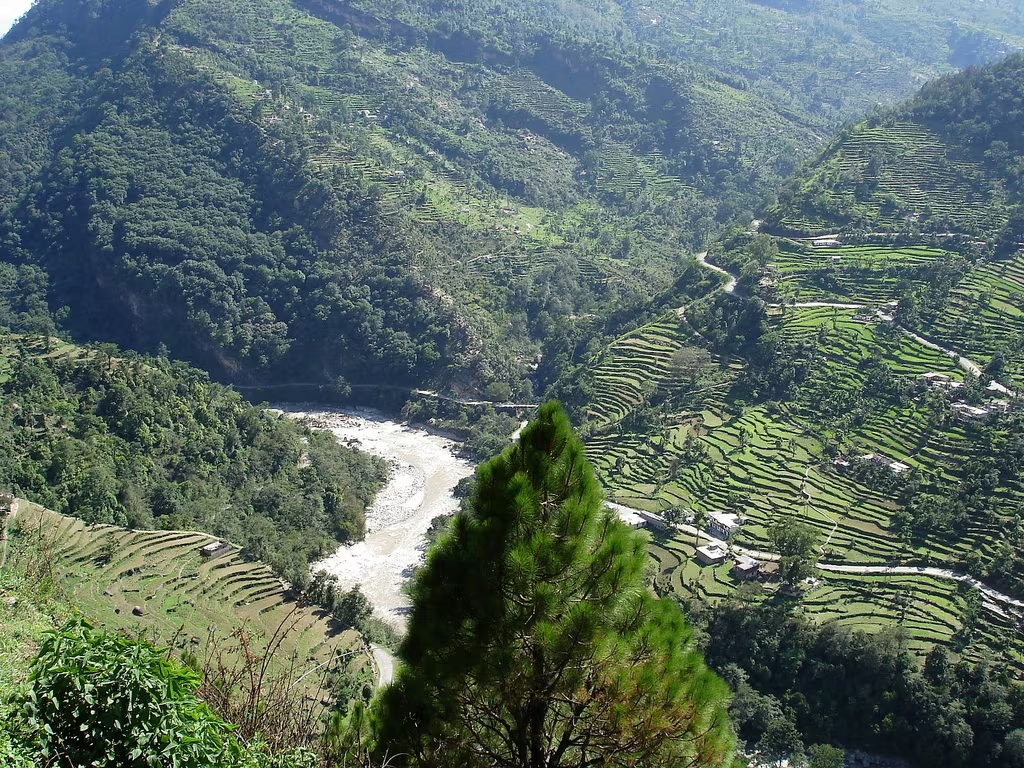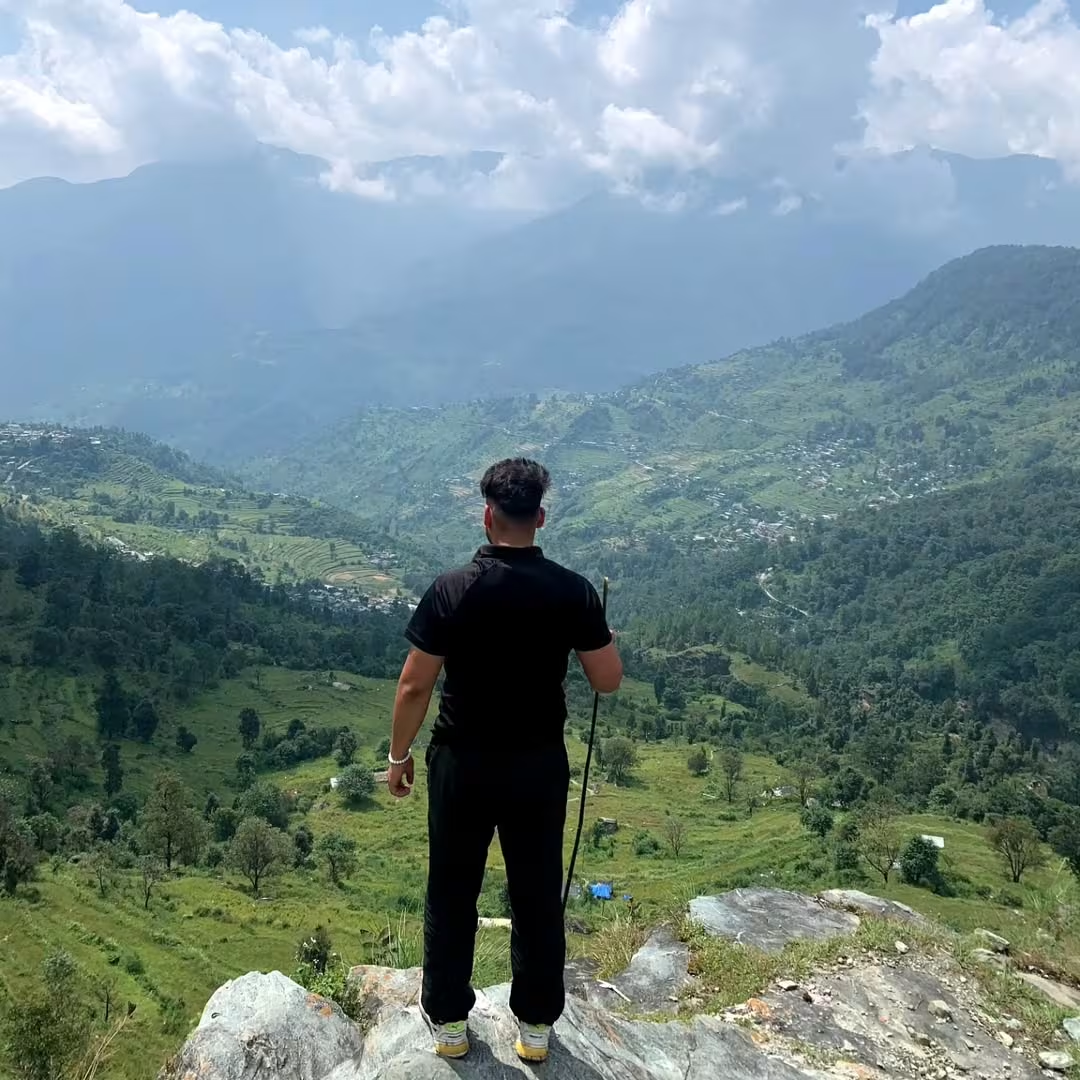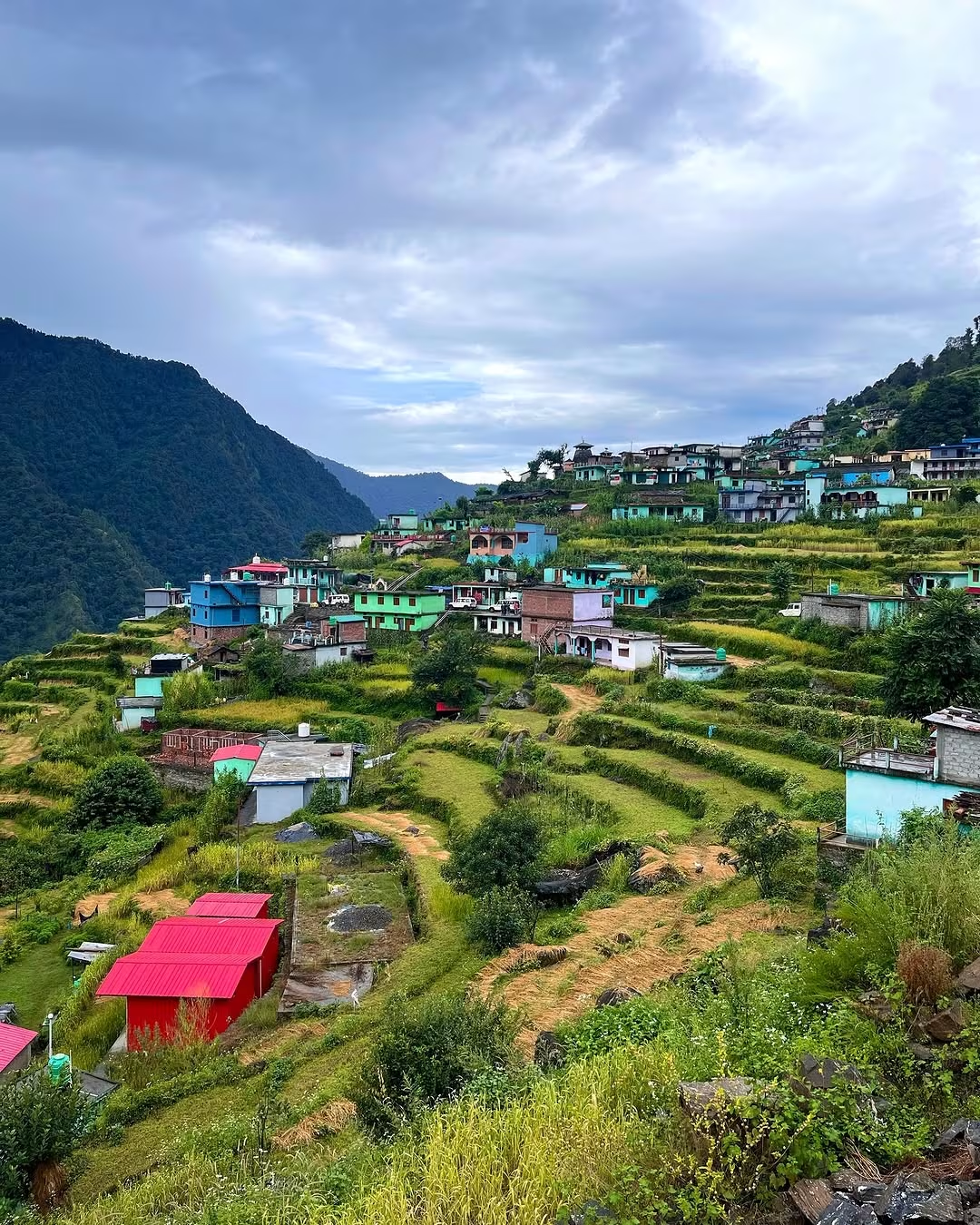Guarded in the peaceful Garhwal Himalayas of Uttarakhand, the Panch Kedar temples, Kedarnath, Tungnath, Rudranath, Madhyamaheshwar, and Kalpeshwar are more than just sacred sites. They are the heart of the region’s culture, surrounded by villages that have preserved traditions for generations. A journey through these villages isn’t just about visiting temples, it’s about experiencing the warmth of the locals, their way of life, and the deep-rooted stories that make these mountains feel alive.
Table of Contents
Let’s go to Chopta, where meadows whisper to the mountains
As I approached Chopta, often dubbed the “Mini Switzerland of India,” the rich meadows stretched out before me, surrounded by tall deodar trees and vibrant rhododendrons. This quiet little village is the starting point for the trek to Tungnath, the highest Shiva temple in the world. The crisp mountain air was filled with the distant tinkling of cowbells, and children with rosy cheeks waved enthusiastically as I passed.

In the evening, I joined a local family for dinner. Sitting cross-legged on the floor of their wooden home, I savored mandua ki roti (finger millet bread) and pahadi aloo (mountain potatoes) cooked to perfection. The grandmother narrated tales of the Pandavas, linking the village’s history to the legends of the Panch Kedar. Her stories painted vivid pictures of gods and heroes, making the ancient myths come alive.
Coming to Gaurikund, a sacred gateway to Kedarnath
Gaurikund is more than just a starting point for the Kedarnath trek, it’s a place filled with myths, devotion, and natural beauty. According to legend, this is where Goddess Parvati meditated to win Lord Shiva’s heart. Today, it welcomes thousands of pilgrims and trekkers each year, each carrying their own hopes and prayers.
As you arrive in Gaurikund, the scent of burning incense mixes with the crisp mountain air. I took a moment to dip my hands into the warm waters, feeling a heartfelt connection to the countless devotees who had performed the same ritual over the centuries. The narrow lanes buzzed with activity vendors selling aromatic incense, vibrant prayer beads, and steaming cups of chai. The harmonious chants from a nearby temple provided a soothing backdrop, covering the village in a cocoon of devotion.
Many travelers stop here for blessings before beginning the challenging trek,” says Ramesh, a local shopkeeper who has lived in Gaurikund for over 30 years. “The journey ahead is tough, but faith gives people strength.” (Mahadev sambhal lenge)
Interesting Fact: One of the highlights here is the Gaurikund hot springs, believed to have medicinal properties. After a long trek, dipping your feet in the warm water feels like nature’s way of healing your tired muscles.
Sagar Village: Hidden Gem of the Himalayas
The path to Sagar Village was decorated with terraced fields, where villagers toiled actively, cultivating crops that have sustained them for generations. As the base for the trek to Rudranath, Sagar is a witness to the coexistence of humans and nature.

I was invited to participate in a local festival celebrating the harvest. Men and women, dressed in traditional attire, performed the Pandav Nritya, a dance depicting episodes from the Mahabharata. The beats of the dhol and the tunes of the ransingha (a traditional horn) echoed through the night, ringing the village’s deep-rooted cultural heritage.
Ransi, a village where time freezes
Located deep in the mountains, Ransi Village is the last motorable point for those trekking to Madhyamaheshwar, one of the five sacred Panch Kedar temples. Unlike the bustling pilgrim spots, Ransi feels untouched by time.
Ransi Village, with its stone houses and slate roofs, exudes an old-world charm. Serving as the base for the trek to Madhyamaheshwar, it offers panoramic views of the snow-clad peaks. The villagers, known for their hospitality, welcomed me with open arms.

Walking through the village, you’ll often see locals tending to their fields or spinning wool outside their homes. The slow pace of life here is a refreshing change from the chaos of city life.
One evening, as the sun dipped behind the mountains, I sat with the village elders around a bonfire. They spoke of their ancestors, the challenges of living in such remote terrains, and their unwavering faith in Lord Shiva. The night sky, unpolluted by city lights, showcased a mesmerizing array of stars, making me feel both insignificant and profoundly connected to the universe.
“Not many people come this way,” says Sita Devi, an elderly woman weaving a traditional shawl. “But those who do, never forget our village. The mountains take care of everyone who respects them.”
As the sun sets, the Himalayan peaks turn golden, and the sound of distant temple bells echoes through the valley. Sitting around a small fire with villagers, sharing stories over a plate of hot rajma-chawal, makes you feel like you’re part of something bigger a tradition that has lasted for centuries.
More about the Himalayan Culture
Throughout my journey across these villages, I was struck by the simplicity and resilience of the mountain folk.
Their lives, though challenging, are enriched by traditions, festivals, and a deep sense of community. The local cuisine, heavily reliant on what the land provides, offers a delightful exploration of flavors
• Staple Foods: Dishes like chainsoo (a roasted black gram curry) and jhangora ki kheer (a sweet pudding made from barnyard millet) are both nutritious and flavorful.
• Festivals: Celebrations such as Harela, marking the onset of the monsoon, and Phool Dei, a festival of flowers, highlight the villagers' intrinsic bond with nature.
• Handicrafts: The local markets are adorned with handwoven woolen shawls, intricately carved wooden artifacts, and traditional jewelry, reflecting the artisans' skills passed down through generations.Practical Information for Travelers
• Accommodation: While options are basic, the warmth of homestays in these villages offers an authentic experience.
• Best Time to Visit: The ideal period is between May and October, avoiding the harsh winter months when treks become treacherous.
• Connectivity: Prepare for limited mobile network coverage,it's an opportunity to disconnect and immerse fully in the experience.Conclusion
A Journey Beyond the Mountains
Walking through the villages surrounding Panch Kedar isn’t just about reaching temples or ticking off destinations, it’s about feeling the pulse of the Himalayas. Every path whispers stories of devotion, every home radiates warmth, and every face you meet carries the resilience of mountain life.
As I took my final steps away from these sacred lands, I realized I wasn’t just leaving behind peaks and shrines, I was carrying a part of them with me. The chants of prayers, the scent of burning wood, the laughter of children running through the fields, all of it stayed, like echoes in my soul.
Some journeys don’t end when you return home. They settle within you, changing the way you see the world.

Leave a Comment